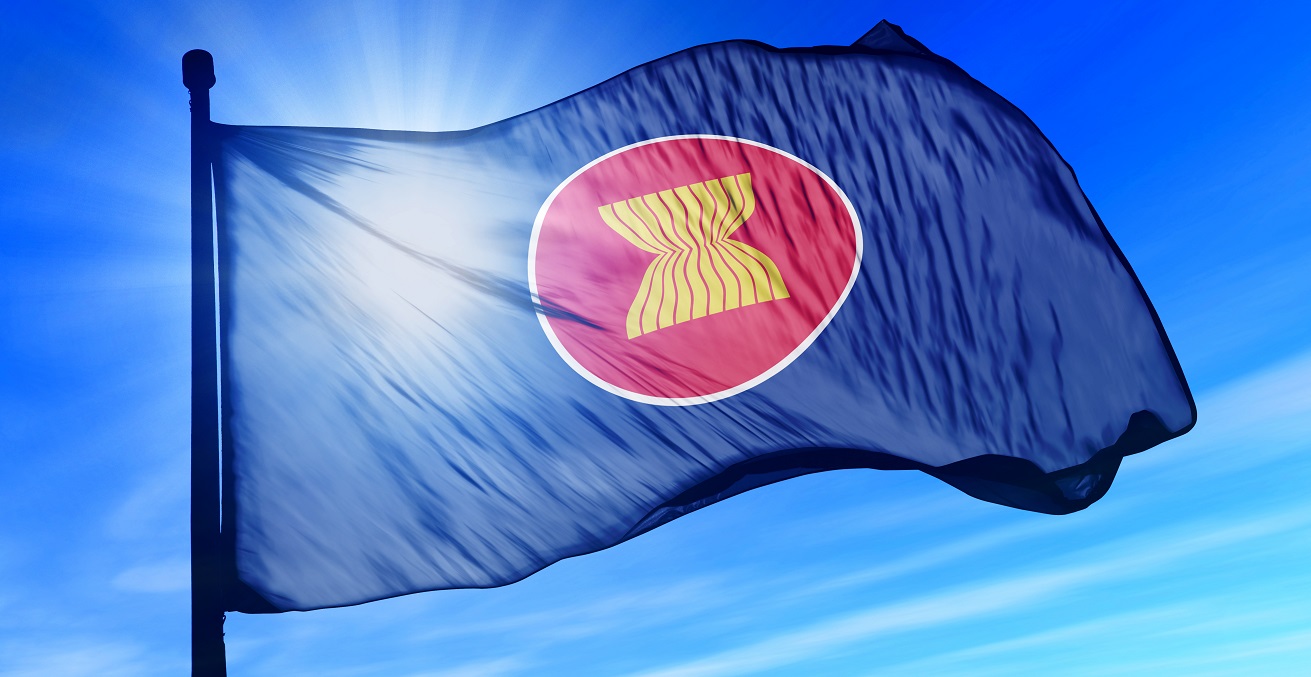ASEAN's Commitment to Consensus

Achieving consensus among member states is the central mechanism of ASEAN’s functionality. This consensus is founded upon the idea that the regional interest is interlinked with each member state’s national interest.
This is part two of a three-part series on the ongoing relevance of ASEAN in regional cooperation as strategic tension rises between the US and China. Part I, published on September 18, can be found here. Part III will be published on October 1.
Within ASEAN, decision-making by consensus and its corollary, non-interference in internal affairs, are the only practical means of managing the permanent conditions of race and religion in Southeast Asia. These principles have sometimes been modified in practice, but they cannot be abandoned as operating principles. Consensus decision-making reassures the small ASEAN countries that the big – Indonesia – cannot impose its will upon them, and it reassures the big that the small will not gang up against it. Any other means of making decisions would only accentuate innate suspicions and creates a risk of small disagreements escalating into major conflicts.
On issues that cannot be avoided, ASEAN’s fundamental consensus is to always have a consensus, even if it is only a consensus of form rather than substance. ASEAN avoids discussing issues where it is obvious that there will be no consensus. This is why ASEAN’s characteristic mode of expression is highly circumlocutory, sometimes to the point of obscurity or meaninglessness, and why ASEAN does not try to solve or even have a position on every issue. Or to restate the point in another way, the fundamental consensus is always to preserve the organization.
The failure of the Phnom Penh ASEAN Ministerial Meeting in July 2012 to agree on a Joint Communique because Cambodia refused to accept any compromise on language on the South China Sea was therefore shocking and could have posed an existential crisis to ASEAN. Fortunately, that proved to be an exceptional situation because the then-Cambodian foreign minister was in a more than usually obtuse frame of mind, thoughtlessly egged on by an overly ambitious Chinese vice-minister who perhaps harboured dreams of replacing Yang Jiechi as foreign minister. ASEAN’s near-death experience seems to have quickly instilled a modicum of common sense both in China and its lacky. China is not out to destroy ASEAN, only capture it.
Only week after the Phnom Penh meeting, due to the tireless efforts of the then-Indonesian foreign minister, Marty Natalegawa, consensus was reached on ASEAN’s six-point principles on the SCS. The language of the six-point principles was largely taken from previously agreed documents. The resulting language was, in parts, in fact stronger than some of the compromises that had been offered to Cambodia but rejected, which underscored how Cambodia’s attempt to be helpful to China had been singularly clumsy, if not downright stupid. Since then, the six-point principles have formed the core of consensus on the SCS. Cambodia and Laos have, on occasion, been difficult over the SCS, but so far, not as foolishly intransigent as in 2012.
Speaking about a year after the debacle in Phnom Penh, Cambodian Prime Minister Hun Sen said supporting China was “Cambodia’s political choice.” This statement betrayed Cambodia’s lack of understanding of how ASEAN works. ASEAN is an inter-state oranisation, not a supra-national organisation. No member is required to give up its sovereign right to define its national interests as it chooses. Cambodia’s right to make its own political choices was never at issue. But as S. Rajaratnam, Singapore’s first foreign minister, put it at the signing of the Bangkok Declaration in 1967, henceforth Southeast Asian nations had to adopt a “new way of thinking,” in which the regional interest had to be some part of each member’s definition of national interest. The other foreign ministers made much the same point in their own ways.
ASEAN’s original members had differences of interests that were, in some cases, more fundamental than Cambodia’s support for China. Among them, the Philippine claim to Sabah which led Malaysia to boycott some early ASEAN meetings; the role of foreign bases in Southeast Asia, which almost led Singapore to walk out of the foreign minister’s meeting drafting the Bangkok Declaration; and at the end of the 1980s during the end-game in Cambodia, when Indonesia again tried to impose its will as regional hegemon. But the sense that the regional interest had to be part of the national interest held ASEAN together, and compromises were found.
That sense is undoubtedly less strong in some of the newer members, particularly Cambodia. Cambodia’s tragic and traumatic history is perhaps responsible for its overly transactional, narrow, and short-term calculations of interests. It was a mistake for ASEAN to have hastily expanded its membership in the 1990s without adequate socialisation of new members. That is water under the bridge, but all is not lost. The most powerful and enduring type of socialisation comes from the pressure of events.
Whatever the suspicions and animosities the original five members – Indonesia, Malaysia, the Philippines, Singapore, and Thailand – harboured against each other, they were all anti-communist and faced armed communist insurgencies supported by China. With war raging on the mainland, minimising the opportunity for external interventions taking advantage of intra-regional conflicts to embroil Southeast Asian nations in Cold War proxy conflicts that provided the original impetus to manage mistrust. But the extension of that impetus to the idea that peace and stability could be best secured by excluding the major powers from the region, which found expression in the Zone of Peace, Freedom, and Neutrality (ZOPFAN), and later the Southeast Asian Nuclear-Weapons-Free-Zone (SEANWFZ), was impractical to the point of being delusional.
Being occasionally delusional is the unfortunate price of having a consensus on always having a consensus. ZOPFAN’s main champions were Malaysia and Indonesia. Around the same time as ZOPFAN was proclaimed, the US’ 7th Fleet and the Soviet Union’s Pacific Fleet administered a strong dose of cold reality. Ignoring the claim of these two countries that the Strait of Malacca was not an international waterway, the US and the Soviet Union sent their warships through the Straits. Jakarta and Kuala Lumpur could only watch helplessly.
Nevertheless, the sentiment lingered on. In 1990, after a combination of Filipino politics and natural disaster forced the US out of Subic Bay and Clark Air Base, Singapore and the US signed a memorandum of understanding (MOU) that allowed the US limited use of some Singaporean facilities. Jakarta and Kuala Lumpur reacted as if Singapore had conspired with the devil to sell their first-born into slavery. But their reaction was muted when an enhanced MOU was concluded in 2005. In 2019, when an even more enhanced renewal was signed by Prime Minister Lee Hsien Loong and President Trump during the UN General Assembly in New York, with all the fanfare that accompanies any Trump event, it attracted nary a whisper. Malaysia and Indonesia have built their own defence ties with the US which include port calls, use of facilities, and joint exercises.
What happened? Although they may not be prepared to publicly say so, China’s increasing assertiveness – if not outright aggressiveness – in the SCS and on other issues made clear that the idea that only balance among major powers rather than their self-restraint could ensure stability in Southeast Asia was not just a Singaporean eccentricity. It also underscored the irreplaceable role of the US in any balance.
The formation of the ASEAN Regional Forum, followed by the East Asia Summit and the ASEAN Defence Ministers Meeting Plus marked a significant, if unannounced, shift in ASEAN’s official regional security concept. They all encourage and entrench the natural multipolarity of a strategic crossroads where the interests of several major powers inevitably intersect and compete. There will always be more than one major power with interests in the region. That is why Southeast Asia has never fallen under the sway of any single external power, except for a short and historically exceptional period of Japanese occupation.
Bilahari Kausikan is currently chairman of the Middle East Institute, an autonomous institute of the National University of Singapore. He has spent his entire career in the Ministry of Foreign Affairs. During his 37 years in the Ministry, he served in a variety of appointments at home and abroad, including as Ambassador to the Russian Federation, Permanent Representative to the UN in New York, and as the Permanent Secretary to the Ministry. Raffles Institution, the University of Singapore, and Columbia University in New York all attempted to educate him.
This article is an adaptation of the webinar presented by Ambassador Bilahari Kausikan to the AIIA National Office on 10 September 2020. A recording of the webinar is available on YouTube.





